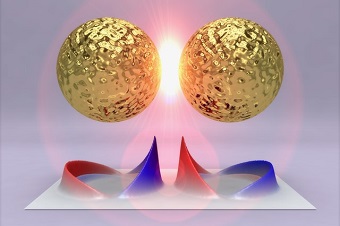Laplacian-Level Quantum Hydrodynamic Theory for Plasmonics

The burgeoning field of plasmonics leverages interactions between photons and electrons to steer and confine light at nanometer scales, opening up a wealth of applications in nanophotonics. To calculate how such systems respond to light, researchers in recent years have put a lot of effort into developing computational methods that take into account quantum effects beyond classical electromagnetism. An approach known as quantum hydrodynamic theory (QHT) is very promising, yet it has fundamental shortcomings. Here, we derive a general theory that extends QHT beyond those limitations.
QHT is promising because its accuracy depends solely on the universal kinetic energy functional, a mathematical mapping between the kinetic energy of the system and its electronic density. However, the exact functional is unknown (although its existence has been proven), so one must rely on approximations. In QHT, this can lead to nonphysical modes and convergence problems when calculating the optical response of a plasmonic system.
“We have found that stepping up the mathematical complexity of the universal kinetic energy functional to include second-order derivatives (the Laplacian) of the electronic density allows QHT to overcome fundamental limitations. This allows us to suppress nonphysical modes and convergence problems and to correctly predict several observed phenomena.
Our improvement of QHT represents an efficient and accurate platform for calculating the optical response of plasmonic systems beyond classical electromagnetism. It also brings us closer to the potential discovery of the exact universal kinetic energy functional, which would be revolutionary in computational material science.
Published in Physical Review X by our researchers, Henrikh Baghramyan, Fabio della Sala and Cristian Ciracì.
Paper at THIS link